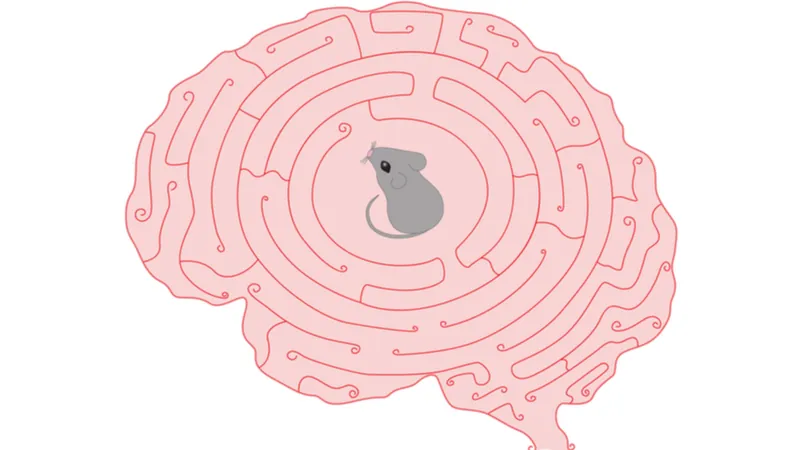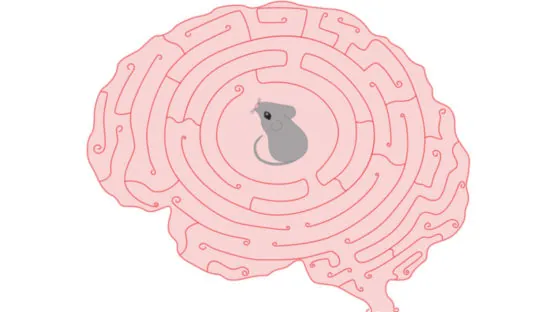A new article published in Aging and Disease has taken a look at what two stem cell-activating growth factors can do in aged mice with Alzheimer’s-like pathology.
Alzheimer’s disease (AD) is perhaps the most age-related of all age-related diseases. Perhaps not coincidentally, it has also been the most stubborn disease to develop treatments for. One possible reason for this is the failure to take aging into account during the preclinical testing stage. Mice do not develop AD pathology naturally, and so the best mouse models of the disease are genetically modified to do so. However, they develop these pathologies much sooner in their relative lifespans than humans do. For example, one of the most commonly used models, the APP/PS1 transgenic mouse, is typically used for treatment testing at around 9-12 months of age, even though mice typically live for 24-32 months.
Fortunately, researchers are coming around to this reality. Even though they had already completed a similar study in 9-month-old mice, researchers at SUNY Upstate Medical University in Syracuse repeated their experiments with 25-month-old APP/PS1 mice [1]. Additionally, their treatment targeted several hallmarks of aging: loss of proteostasis, inflammation, and stem cell exhaustion. Granulocyte colony-stimulating factor (GCSF) and stem cell factor (SCF) are well known for their ability to activate and mobilize stem cells in the bone marrow. These drugs can be thought of as an alternative to cell therapy in which, instead of transplanting donor cells into the blood stream, a patient’s endogenous cells are called into action. GCSF and SCF have also been shown to increase phagocytosis in microglia, thereby reducing misfolded proteins such as β-amyloid.
GCSF and SCF alleviate neurodegeneration even in old mice
The researchers dosed the mice with their GCSF and SCF drug combination for 12 consecutive days and then looked at the effect of the treatment 6 weeks later, investigating many potential contributors to the disease. Extracellular β-amyloid deposits were reduced dramatically compared to the placebo group, with about half as much in the hippocampus and even less in the cortex regions of the brain. Inside the cells, the number of tau tangles remained constant between groups, but the size of those tangles were reduced with GCSF and SCF treatment. In addition to these misfolded proteins, a loss of neural connections is key to the pathological progression of AD. Mice who received the treatment showed a greater number of neural connections. Reduced blood flow to the brain has also been proposed as a potential driver of AD. In this regard, the treatment was found to increase the number of cerebral blood vessels when compared to placebo.
The researchers hypothesized that these results were primarily attributable to the drug combination’s effects on microglial cells. Microglia have previously been shown to phagocytize β-amyloid and reduce its impact on neurodegeneration. However, one concern of this strategy is that chronically activated microglia increase inflammation, another potential driver of AD and other age-related diseases. In-depth observation of the microglia in this study revealed an overall higher population of resting cells (as measured by the marker P2RY12) in the treatment group. However, the opposite was true near β-amyloid plaques, and these microglia were shown to be actively participating in β-amyloid clearance. In combination, these results help explain why β-amyloid was reduced despite the overall reduction in microglia activation. Additionally, the pro-inflammatory marker NOS was decreased and the anti-inflammatory marker IL-4 was increased in the aged mice treated with GCSF and CSF, suggesting that the treatment also had a positive effect on inflammation.
In total, the present study provides the evidence that SCF+G-CSF treatment increases Aβ clearance, promotes recovery of homeostatic microglia, decreases inflammation, reduces aggregated tau, and restricts the loss of dendrites and synapses in the brains of aged male APP/PS1 transgenic mice. SCF+G-CSF-enhanced DAM accumulation surrounding the Aβ plaques for removing pathological Aβ, together with the SCF+G-CSF-enhanced recovery of homeostatic microglia distant from the Aβ plaques for maintaining dendrites and synapses are the unique modulation processes to restrict AD pathology and promote brain repair in the context of AD.
Conclusion
It is encouraging to see a study like this carried out. Researchers are highly incentivized to use younger animals in their experiments due to the increased cost of housing the animals for longer periods of time and intense pressure to publish their results as quickly as possible. Even more encouraging are the positive improvements seen in this treatment arm across various age-related and disease-specific pathways. Of course, mouse studies should always be interpreted with caution, especially for a disease like Alzheimer’s, which has proven so difficult to translate into humans.
Several other questions remain regarding these results. These drugs are well known to activate and mobilize hematopoietic stem cells, but what role they played in this study was not investigated. Additionally, outcomes were only assessed in post-mortem tissue. Given the results, it seems likely that functional behavioral improvements would have been seen as well, but it cannot be claimed with certainty without this data. Finally, as the authors note themselves, it is not clear how much of the improvements seen were due to Alzheimer’s-specific recoveries (i.e. reduced β-amyloid) versus age-related recoveries (i.e. reduced inflammation) because a non-Alzheimer’s control was not included for the treatment group.
Literature
[1] Guo, X., Liu, Y., Morgan, D., Zhao, L. (2020). Reparative Effects of Stem Cell Factor and Granulocyte Colony-Stimulating Factor in Aged APP/PS1 Mice. Aging and Disease, 11(6), 1423-1443. http://dx.doi.org/10.14336/AD.2020.0201



